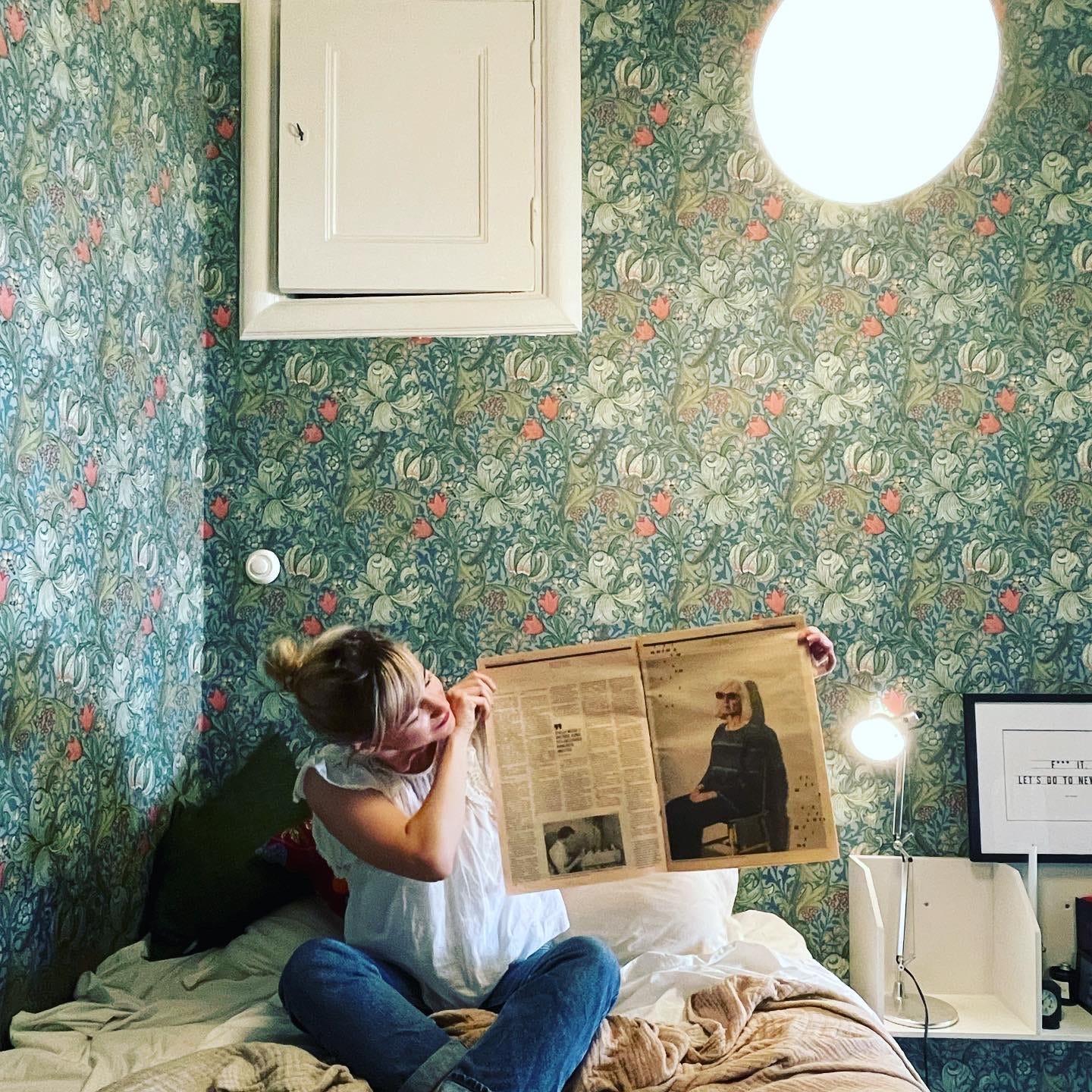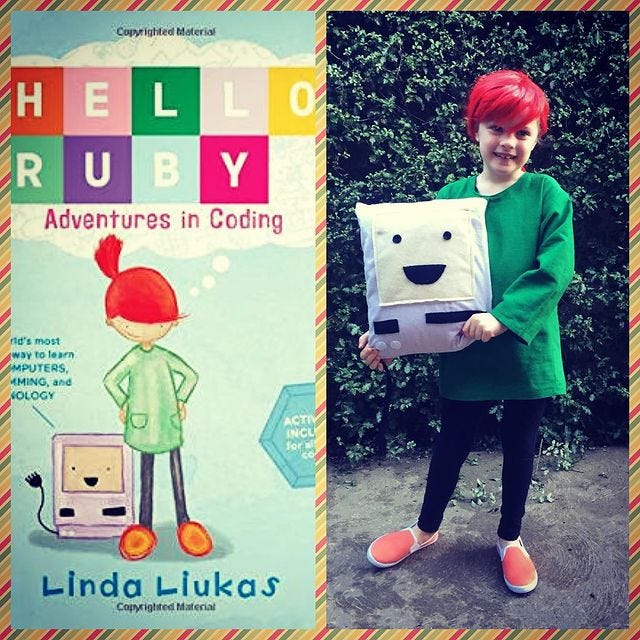No. 23 — Compositional Patterns 🖋️ Comments on punchcards 🏛️ Winamp Skin Museum
Tell it like a mushroom
My name is Linda. I write a bi-weekly newsletter about computer science, childhood and culture - and there are 9706 of you listening. If you enjoy this issue, please share it with anyone you think may find it useful.
Last weekend a story I researched and wrote for the biggest daily in Finland was published. It was my first time writing long form and I loved the experience.
The story is about my hunt for a Finnish Ada Lovelace or Grace Hopper - I interviewed early computer programmers and punchcard operators in Finland, now in their 70s to 90s, to learn how they influenced modern computing culture.
The story is paywalled (and in Finnish!), and I’m going to spoil it a little by saying that as of yet there was no hidden Linus Torvalds. But the response I got from readers was overwhelming - hundreds of comments and stories shared with me, but more importantly new kind of discussions between generations (often moms and daughters!) about careers and work in technology in breakfast tables all around our country.
There were two thoughts I didn’t have the space to explore in the piece.
First, the shape of the stories we tell about technology. There’s a recurring story of innovation in technology that centers around a hard working (often male) genius. It is a popular simplification, because it is straightforward to understand.
The meandering, spiralling or sprawling reality that has to do with the social and intellectual networks of an era, on the institutions and invisible work done by many, is much harder to capture.
Towards the end of the story I conclude:
“Did my hunting trip to the 1960s end empty-handed?
Yes, if the goal was to find a mythical white tiger.
No, if all along I've been on a mushroom hunt.Finding the first mushroom encourages one to look for the next one. And stories, once found, have no end.”
The popularity of books about trees and moss and mushrooms suggest that there is a longing for these non-linear stories. But how do we write them? Because I’m an illustrator, I return to pen and paper and try to keep sketching the compositional pattern of the way we tell stories about technology. Maybe explore the story like a matsutake would? Maybe span the timeline like a mountain would?
Second, the idea of exploring a time that barely left any traces. Computing culture in the 1960s was hierarchical, women made very few contributions that are visible to our day (which does not mean they didn’t exist). Looking for sources made me also much more aware of our own era.
On one hand I loved finding information that isn’t on Google. One of the best parts of writing this story was the work I did in our National Archive, leafing through old journals. Some of the interviewees came from an obscure 1993 book I bought from an antiquarian bookshop a year ago. It felt like a true treasure hunt, like I was privy to some secret information not available for everyone.
On the other hand, I got jealous to all the art historians sitting next to me, reading through correspondence, studying original paintings. All I had was an opening, a gap, lines of code that have disappeared years ago. So how do we look for sources and find the stories about technology, when we lack the artefacts?
If I ever have the opportunity, I want to visit the archives of some of the big institutions in charge of the changes in 1960s to see if I can find any of the original punchcards, meeting memos or specifications, to see if there are any hand drawn doodles, notes or anecdotes that would help shed light to a computing time that barely left any.
Linked List
In computer science, a linked list is a linear collection of data elements whose order is not given by their physical placement in memory. But here it is a selection of things I’ve been reading lately.
Regarding shape of stories, one of my all time favorite books on writing is John McPhee’s Draft no. 4. McPhee’s diagrams make so much sense to me, a visual thinker. Another recommendation is Jane Alison’s Meander, Spiral, Explode: Design and Pattern in Narrative. If you have other recommendations on forms and structures of writing, would love to hear!
Important women in Computer Science (who are not Grace Hopper)
Logic Mag (which I subscribe to and recommend to anyone interested in deep thinking around technology) specialises in the kinds of stories I love. On the surface they are about a shiny/not-so-shiny piece of tech, but deep down about our society and relationships to one another. A few examples: Built to Last (COBOL/Pandemic), Model Metropolis (SimCity/Urban design), The Unicorn Hunters (Sherman Fairchild/Modern VCs)
Two lighter ones: Winamp Skin Museum runs on my teen nostalgia. Control Panel collects dials, toggles, buttons, and bulbs.
Classroom
I’m hoping to surface and share stories from all of you and I’d love to see your creations! Here are a few educators and parents using Ruby in creative, fun and inspiring ways.
What a little legend, said someone in the comments.
Ruby’s pattern practice (exercise seven in the first book) - make the pattern according to instructions like these: Draw lines / Not straight / Not touching / Use four colors
Writing postcards to Ruby <3







Hello, I wanted to give you a thought on very short answers into stencil
"Finding the first mushroom encourages one to look for the next one. And stories, once found, have no end.”" < this line here could be a short comic strip, have you ever looked at those comics in the newspaper there short enough to tell everyone a story and can even give people a laugh.
But you can make those short clips into something..
I guess what im pointing out is that the line i selected is put a certain way as i see it.
First box is someone standing at a mushroom, with cloud above there head like a sim thinking of more mushrooms then the next box would be the person in a different scene with a bunch of mushrooms on the ground with the person smiling and reaching down, The third box would be the person has all the mushrooms in hand and is about to enter there house or whatever they live ?..
If you consider anything you can always expand on it, you might have to stretch the truth a little to get there but it can be done :).
well done on the rest of the stuff, I havent read your finish paywalled thing but good stuff regardless :)